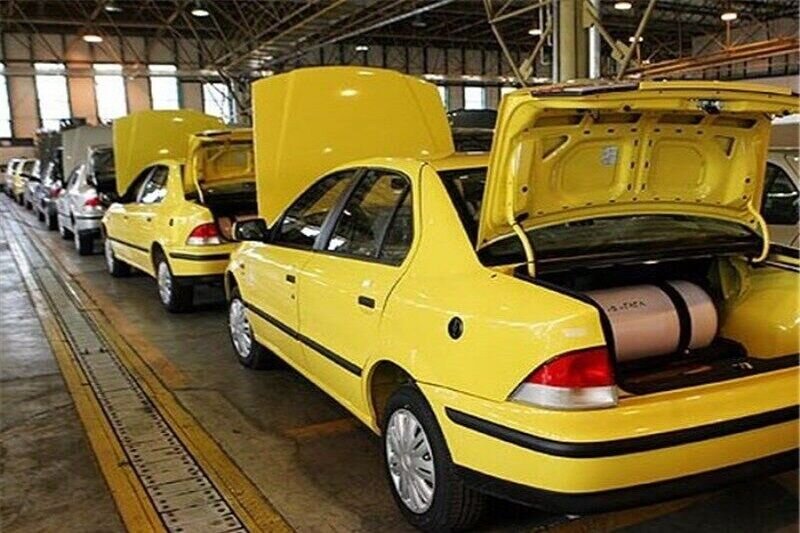Realizing CNG potentials through dual-fuel cars: merits and challenges

TEHRAN - Holding nearly 18 percent of the global gas reserves, Iran is one of the most hydrocarbon-rich areas in the world, and the country’s giant South Pars gas field, which Iran shares with Qatar in the Persian Gulf, is by far the world's largest natural gas field.
Despite having abundant natural gas resources, the Islamic Republic is also one of the world’s leading gasoline consumer countries, and a great part of the country’s 100-million-liter gasoline output is used inside the country, while the exports of the mentioned fuel can be an excellent source of income for the country and less gasoline consumption would also mean less air pollution and a cleaner environment.
***Promoting CNG consumption by making dual-fuel cars
Tackling this issue, the Iranian government has been promoting the use of Compressed Natural Gas (CNG) as a replacement for gasoline over the past few years and has declared the CNG the country’s national fuel.
Following the above-mentioned declaration, in December 2019, the National Iranian Oil Refining and Distribution Company (NIORDC) and Iran’s state-owned Iran Khodro Company (IKCO) signed a memorandum of understanding (MOU) to add new dual-fuel vehicles to the country’s public transportation fleet.
The mentioned MOU was signed following a resolution by the Government Economic Council that targeted adding 1.46 million dual-fuel vehicles to the public transportation fleet.
Now, over two years after the beginning of the said program, about 200,000 vehicles have become dual-fuel and 350 million liters of gasoline are saved, according to a member of the country’s CNG Industry Abscission.
“In the last two years, conversion of about 200,000 vehicles to dual-fuel has resulted in a saving of 350 million liters in gasoline consumption, and it is expected that higher savings will be achieved with the full implementation of the Government Economic Council’s resolution in this regard,” Navid Khaseh-Baf said in a press conference on Saturday.
According to Khaseh-Baf, although the goal of the program was only to turn the public transportation fleet into dual-fuel vehicles, later the resolution was amended and other passenger cars and cars affiliated with online transportation services like Snap were also allowed to be included in this program.
Based on the new amendments, the government pays for 75 percent of the conversion costs through bank loans offered to the car owners.
As mentioned earlier, increasing the number of the country’s dual-fuel cars would mean a reduction in gasoline consumption; this gasoline could be exported and the earned revenues could be used for further development of such CNG-promoting programs.
Necessary infrastructure must be developed
In order for the government’s CNG promoting programs to succeed, the necessary infrastructure must be also developed.
Some experts believe that although the government is promoting the use of CNG as the national fuel, the necessary infrastructure for the transition from gasoline to CNG is not well prepared in the country.
In an interview with Eghtesad Online, Hamidreza Salehi, the deputy head of Iran Chamber of Commerce, Industries, Mines and Agriculture (ICCIMA)’s Energy Committee, said: “One of the most important infrastructures needed for promoting CNG consumption is setting up enough CNG stations across the country, which unfortunately are not well provided even in metropolises such as Tehran.”
“Many provinces lack enough gas stations, Sistan-Baluchestan is one of the most prominent examples in this regard,” he added.
“Government is inviting people to change their cars into dual-fuel ones; however, we see little changes in infrastructure and in the number of CNG stations, this could result in long lines at CNG stations and could add to the problem,” he said.
In addition to the mentioned infrastructure, Salehi believed that another important aspect of the issue is the lack of education and cultural promotion of proper and optimized fuel consumption.
What should be done
Constructing new CNG stations in the country in order for people to have easy access to the fuel; monitoring the country’s auto industry in order to produce high-quality dual-fuel vehicles, and also supervising the process of converting gasoline-fuel cars into dual-fuel ones in order to prevent equipment-related safety hazards, and finally teaching people about the merits of using clean fuels and the impact which they would have on the environment, can be mentioned as some of the ways through which the government would be able to successfully implement its plans for establishing CNG as the national fuel.
EF/MA
Leave a Comment